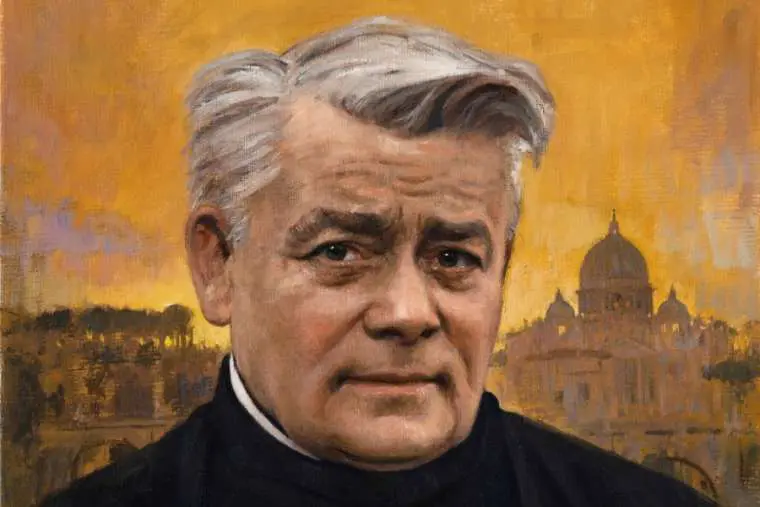Text and Illustrations from Wikipedia - the free encyclopædia,
unless otherwise stated.

Saint Protus and Saint Hyacinth.
Date: 2 June 2006 (original upload date).
Source: http://catholicculture.org/lit/calendar/day.cfm?date=2003-09-11.
Transferred from en.wikipedia.
Author: Original uploader was Polylerus at en.wikipedia
(Wikimedia Commons)

Church of Saints Hyacinth and Protus,
Photo: June 2004.
Source: Own work.
Author: Mattana Mattis
(Wikimedia Commons)
Saint Protus and Saint Hyacinth were Christian Martyrs during the Persecution of Emperor Valerian (257 A.D.–259 A.D.). Protus' name is sometimes spelled Protatius, Proteus, Prothus, Prote, and Proto. Saint Hyacinth is sometimes called by his Latin name Hyacinthus (in French: Hyacinthe; Spanish: Jacinto; and Italian: Giacinto).
The day of their annual Commemoration is mentioned in the "Depositio Martyrum" on 11 September, in the Chronographia for the year 354 A.D. The Chronographia also mentions their graves, in the Coemeterium of Basilla on the Via Salaria, later the Catacomb of Saint Hermes. The "Itineraries" and other early authorities likewise give this as their place of burial.
Tradition holds that Protus and Hyacinth were brothers. They served as Chamberlains to Saint Eugenia, and were baptised, along with her, by Helenus, Bishop of Heliopolis. Devoting themselves zealously to the study of Sacred Scripture, they lived with the Hermits of Egypt and, later, accompanied Eugenia to Rome. There, they were arrested for their Christianity by Emperor Gallienus (260 A.D.–268 A.D.). Refusing to deny their Faith, they were first scourged and then beheaded on 11 September.
Martyrdom of Saint Protus and Saint Hyacinth.
From a 14th-Century Manuscript.
This File: 7 November 2006.
User: Polylerus
(Wikimedia Commons)
Church of Saints Hyacinth and Protus,
Photo: June 2004.
Source: Own work.
Author: Mattana Mattis
(Wikimedia Commons)

In 1845, Father Marchi discovered the still-undisturbed grave of Saint Hyacinth in a Crypt of the above- mentioned Catacomb. It was a small square Niche, in which lay the ashes and pieces of burned bone, wrapped in the remains of costly stuffs.
Evidently, the Saint had been burnt; most probably both Martyrs had suffered death by fire. The Niche was closed by a marble slab, similar to that used to close a Loculus, and bearing the original Latin inscription that confirmed the date in the old Roman Martyrology:
D P III IDUS SEPTEBR
YACINTHUS
MARTYR
(Buried on 11 September Hyacinthus Martyr).
Rood Screen.
Church of Saints Hyacinth and Protus,
Photo: June 2004.
Source: Own work.
Author: Mattana Mattis
(Wikimedia Commons)
Church of Saints Hyacinth and Protus,
Photo: June 2004.
Source: Own work.
Author: Mattana Mattis
(Wikimedia Commons)
In the same Chamber were found fragments of an Architrave, belonging to some later decoration, with the words:
. . . S E P U L C R U M P R O T I M (artyris) . . .
(Grave of the Martyr Protus).
Thus, both Martyrs were buried in the same Crypt. Pope Damasus I wrote an Epitaph, in honour of the two Martyrs, part of which still exists. In the Epitaph, Pope Damasus calls Protus and Hyacinth "brothers."
When Pope Leo IV (847 A.D.–855 A.D.) transferred the bones of a large number of Roman Martyrs to the Churches of Rome, the Relics of these two Saints were to be translated, also; but, probably on account of the devastation of the Burial Chamber, only the grave of Saint Protus was found. His bones were transferred to San Salvatore on The Palatine Hill.
The remains of Saint Hyacinth were placed (1849) in the Chapel of the Propaganda College. Later, the tombs of the two Saints, and a Stairway, built at the end of the 4th-Century A.D., were discovered and restored.
The Parish Church of Blisland, Cornwall, England, is Dedicated to Saint Protus. It is known locally as Saint Pratt and Saint Hyacinth.
Wooden Vaulting.
Church of Saints Hyacinth and Protus,
Photo: June 2004.
Source: Own work.
Author: Mattana Mattis
(Wikimedia Commons)
The following Text is taken from The Saint Andrew Daily Missal.
Saints Protus and Hyacinth.
Martyrs.
Feast Day 11 September.
Simple.
Red Vestments.
After having been cruelly scourged, these two brothers were beheaded and took their places in The Army of Martyrs (Alleluia).
This was at Rome, about 260 A.D., under Emperors Valerian and Gallian.
Mass: Salus autem.
“The Mass Of The Foundation Of The Trinitarian Order”.
Artist: Juan Carreño de Miranda.
Illustration: LOUVRE
THE SAINT ANDREW DAILY MISSAL

THE SAINT ANDREW DAILY MISSAL
Available (in U.K.) from
Available (in U.S.A.) from







































